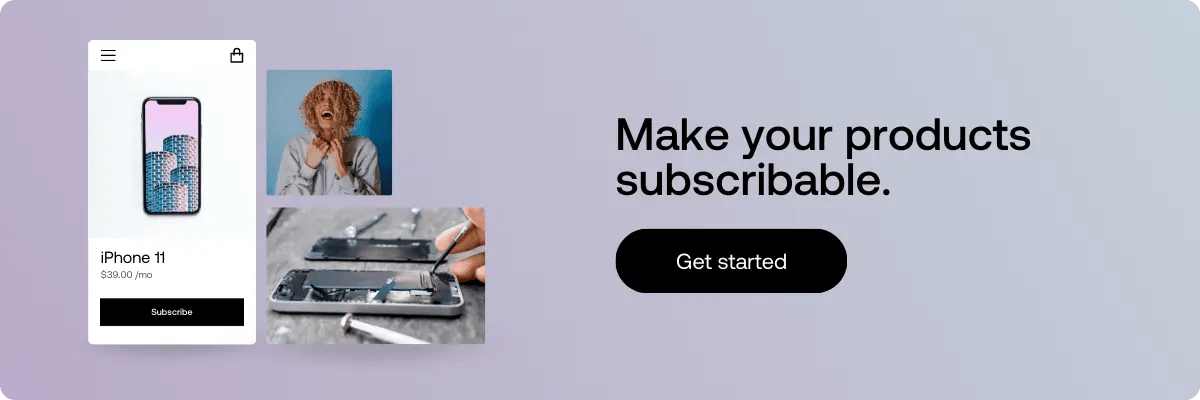In today's competitive business landscape, companies always look for ways to retain customers and maintain a strong market presence. One critical measure that helps businesses monitor their customer base is customer churn.
Customer churn is a critical issue that is likely to touch several business functions, from sales and marketing to operations and finance. As such, it's essential to understand the concept and its potential implications for your company, regardless of your title.
Whether you're a business owner, a marketing professional, a product manager, or part of a cross-functional team looking to reduce churn, increase customer lifetime value, or build stronger customer relationships, this article is for you.
What is customer churn?
Customer churn, also known as customer attrition, refers to the customers who stop using a company's products or services for one reason or another. Customer churn rate is a measure that refers to the relative proportion of churned customers in a given period. It is one of the most important subscription KPIs you need to measure.
You can calculate customer churn rate by dividing the number of customers lost by the total number of customers within a specific period. The average churn rate depends highly on your industry, but you should aim as low as possible.
It's important to distinguish between customer and revenue churn, as they provide different insights into a company's health.
-
Customer churn focuses on the loss of customers or subscribers. It measures the percentage of customers who discontinue their relationship with your company during a given period.
-
Revenue churn, on the other hand, concentrates on the loss of revenue due to customer churn. This metric considers both the customers who cancel their subscriptions and those who downgrade to a lower-priced plan. Revenue churn is calculated by dividing the total lost revenue during a specific period by the total revenue at the beginning of that period.
Analyzing both customer churn and revenue churn side by side can provide a more comprehensive picture of your company's health. For instance, a business might have a relatively low customer churn rate but a high revenue churn rate. This could indicate that although the company is retaining customers, it is losing revenue due to customers downgrading to cheaper plans. Conversely, a company with a high customer churn rate but low revenue churn might be losing low-paying customers while retaining high-paying customers.
By examining customer and revenue churn rates, you can better understand your customer base, identify areas for improvement, and develop strategies to optimize revenue streams. This holistic approach can ultimately help you enhance customer satisfaction and retention, leading to improved brand loyalty.
Customer retention and churn: Two sides of the same coin
Customer churn and retention are closely related, as they both focus on maintaining a company's customer base. While churn measures the rate at which your business is losing customers, retention measures the rate at which your company can retain existing customers.
Retaining current customers is usually more cost-effective than acquiring new ones, making it essential for companies to focus on customer retention strategies. To simplify, you can increase customer retention by reducing churn, leading to a more stable and predictable revenue.
Why customer churn should be your priority
For companies operating on a subscription model, reducing customer churn is vital. These businesses rely on recurring revenue from customers who subscribe to their services.
A high churn rate indicates a loss of customers, which directly impacts your bottom line. However, the negative effects of customer churn are not limited to revenue loss. The following points highlight other indirect consequences of churn that can harm your business:
Loss of market share
When customers leave a company and switch to a competitor, it can result in a loss of market share. Over time, lost customers to a rival can weaken your competitive position in the market.
Negative impact on brand image
Churn due to bad customer experiences can tarnish your company's reputation. Negative word-of-mouth, online reviews, and public customer feedback can deter potential customers and create a long-lasting impact on your brand image.
Higher customer acquisition costs
Acquiring new customers is typically more expensive than retaining existing customers. If customers churn before they have repaid the acquisition cost, these customers become loss-making for the company. Consequently, a high churn rate can increase a business's overall customer acquisition costs.
Lost upselling and cross-selling opportunities
Customer churn also means the loss of potential upselling and cross-selling opportunities. Retained customers are significantly more likely to purchase additional products or services from a company, contributing to future revenue growth. Churn reduces the size of the existing customer base, thus, limiting the potential for upselling and cross-selling.
Understand the reasons for churning customers
Understanding the customer journey and reasons behind customer churn can provide valuable insights into the indirect effects churn might have on your business. For example, if churn is primarily driven by poor customer service, this can indicate a broader issue with the company's support processes and have a negative impact on your brand image. On the other hand, if churn is primarily driven by pricing, it might suggest the need for a more competitive pricing strategy or a better articulation of the value proposition to customers.
By examining the reasons for churn and considering the indirect effects, you can develop targeted strategies to reduce customer churn, address the root causes, improve customer retention, and mitigate the negative consequences of churn on your overall performance.
Reasons for customer churn
Customer churn can result from various factors, including voluntary and involuntary churn. Understanding these reasons can help your business develop strategies to reduce churn.
Voluntary reasons for churn
Dissatisfaction with the product or service quality
Poor product or service quality can lead to dissatisfied customers, prompting them to seek alternatives. In this case, you should invest in product development and quality assurance to improve the user experience.
Poor customer service
A lack of timely, helpful, or empathetic customer support can cause customers to become frustrated and abandon the company. To improve your customer service, you can create self-help content for different channels. In addition, offer the possibility to talk directly to a person, for example, via a chat tool.
Pricing
High prices or a lack of perceived value for the cost can drive customers away. Therefore, you should regularly review your subscription pricing strategy and ensure they remain competitive. Alternatively, adding more content or features to your subscription plans can improve the value proposition.
Competition
Customers may switch to competitors who offer better deals, features, or overall value. So monitor what your competitors do and adjust offerings and pricing if necessary.
Lack of product-market fit
If your offerings do not adequately address customers' needs or fail to deliver sufficient value, customers will likely churn after a trial period. In this case, you can try refining your product offering based on user feedback, ensuring that the product meets the needs of your target audience.
Inadequate understanding of the target audience
Failure to comprehend the motivations and preferences of your target audience can result in products or services that do not resonate with your customers, leading to churn. To better understand the needs and preferences of your target audience, you should conduct market research.
Seasonal market
Some industries have a seasonal market, or customer needs are temporary in nature (e.g., baby and maternity products), leading to customer churn as customers' needs change over time.
For example, customers might cancel their bicycle subscription service at the end of the summer as their needs change with the seasons. To tackle this issue, you should diversify product offerings to cater to customers' needs throughout the year or offer seasonal discounts to retain customers during off-peak periods.
Insufficient continuous value or renewal incentives
If you fail to deliver lasting value to customers or do not provide compelling renewal offers, customers may be more likely to cancel their subscriptions. That's why it's essential to regularly communicate the value you provide customers and offer renewal discounts or bonuses to encourage retention.
Involuntary reasons for churn
Financial constraints
Customers may face financial difficulties that force them to cancel their subscriptions. You can turn these situations into wins by showing empathy and offering flexible pricing plans or an option for temporary pauses to accommodate customers facing financial difficulties.
Relocation
Customers who move to areas where your services are unavailable may have to cancel their subscriptions. If regional expansion is not in your plans, thank the customer for your journey together and wish them well for the future.
Technical problems
Issues such as credit card failures or other payment processing errors can lead to involuntary churn, as customers may be unable to renew their subscriptions due to technical difficulties. Therefore, implementing a robust payment processing system and providing proactive support to customers facing technical issues is essential.
The causes of customer churn are rarely entirely disconnected. As is often the case in consumer psychology, behavioral patterns are complex and consist of several internal and external factors that the company may or may not be able to influence through its own actions. By understanding the various causes of churn and addressing them proactively, you will be better positioned to act and make modifications to your processes.
Conclusion
Understanding and effectively managing customer churn is crucial, especially if your company operates on a subscription model. To do this, you need to measure and analyze customer churn to identify areas for improvement and tailor your strategies to retain loyal customers.
By gaining insights into the reasons behind churn, you can address the root causes and take targeted actions to enhance customer loyalty and satisfaction. This, in turn, can lead to stronger customer relationships, increased lifetime value, and a more stable revenue stream. To successfully fight against churn, you need to proactively invest in understanding your customers' needs, preferences, and expectations.
If you're already delivering value, offering exceptional customer service and support, and staying attuned to market changes and competition, you're on the right track to reduce churn and build a loyal customer base supporting your growth.









